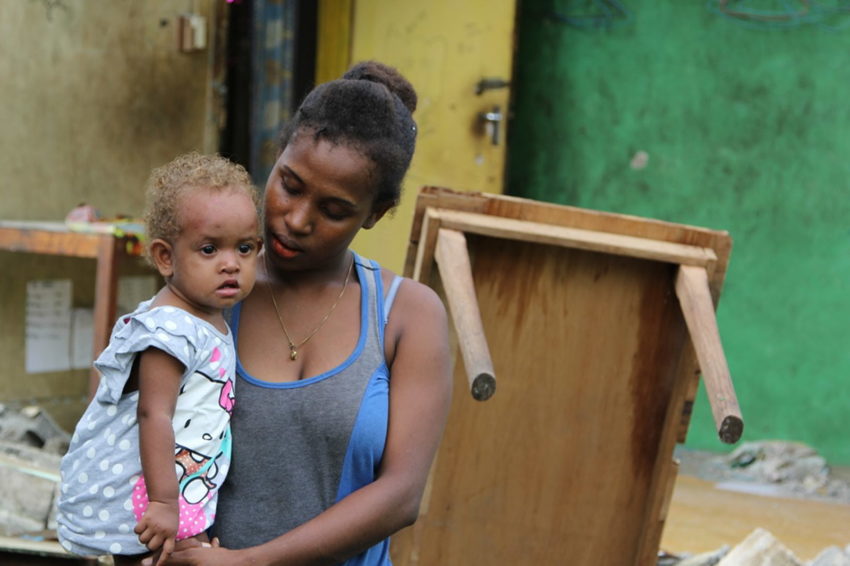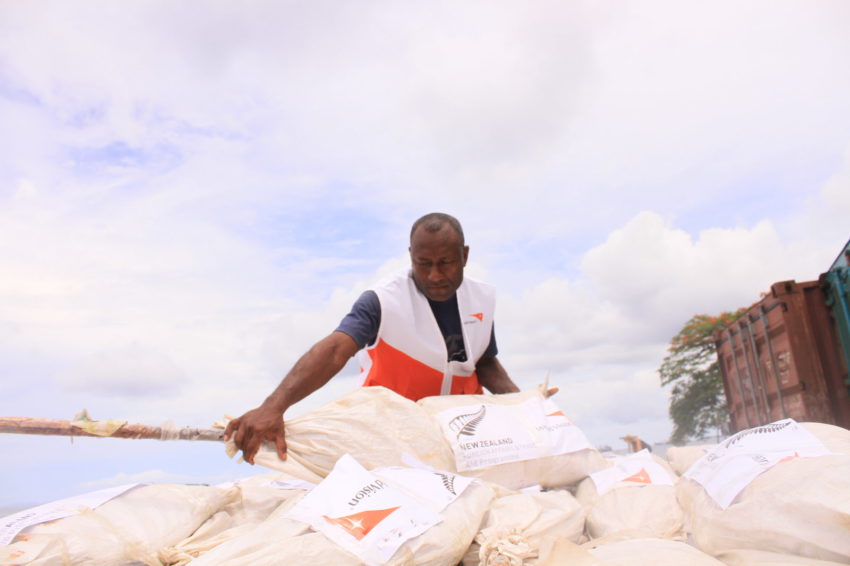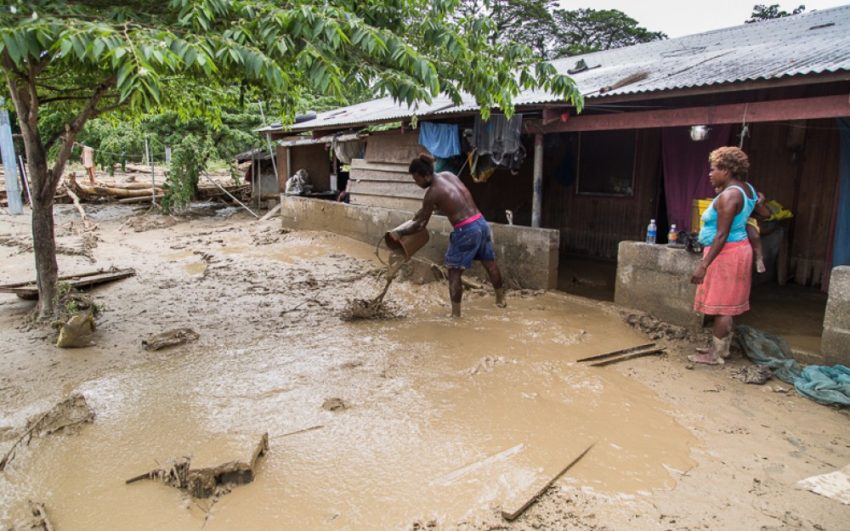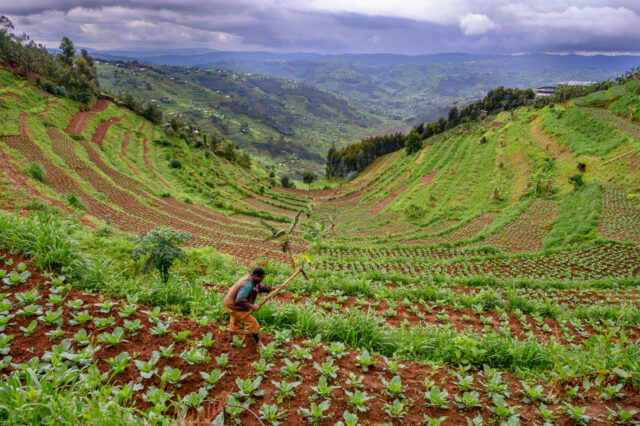The Solomon Islands, a nation of nearly 1,000 islands east of Papua New Guinea, is located on the Pacific Ring of Fire, where 90% of the world’s earthquakes occur. The islands are also prone to extreme weather and flooding. During the past decade, Solomon Islands disasters included cyclones, high tides, floods, earthquakes, volcanic eruptions, landslides, droughts, and tsunamis. The Solomon Islands is also vulnerable to rising sea levels.
Recent timeline of disasters in the Solomon Islands
- 2007 — April 2: A magnitude 8.1 quake results in a devastating tsunami that kills at least 34 people and displaces 5,000 in coastal areas of Western and Choiseul provinces.
- 2013 — February 6: Off the coast of the Santa Cruz Islands in the southeast Solomon Islands, a magnitude 8.0 quake generates a 3-foot tsunami wave that kills 10 and damages or destroys more than 700 homes.
- 2014 — April 3: Flash flooding in Honiara, the capital, and the Guadalcanal Plains to the east, leaves 22 people dead and 9,000 homeless.
- 2016 — December 9: Three provinces are affected by a magnitude 8 earthquake. Aftershocks followed, including a second magnitude 6.9 quake the next day.
FAQs: What you need to know about the Solomon Islands
Explore frequently asked questions about the Solomon Islands, and learn how you can help.
- Fast facts: Solomon Islands
- Are the Solomon Islands at major risk for natural disasters?
- Why do earthquakes and tsunamis occur in the Solomon Islands?
- What other environmental hazards affect the Solomon Islands?
- How damaging was the 2016 Solomon Islands earthquake?
- How can I help children and families affected by disasters in the Solomon Islands?
Fast facts: Solomon Islands
- Six major islands and about 900 smaller islands
- Population of about 600,000 people
- Economy based on agriculture, forestry, and fisheries
- One of the poorest countries in the Pacific, partially due to frequent disasters
- Honiara, the capital, on Guadalcanal island, was the site of a major World War II campaign in the Pacific
Are the Solomon Islands at major risk for natural disasters?
Yes, the Solomon Islands archipelago is vulnerable to natural disasters and disease outbreaks, including:
- Earthquakes
- Tsunamis
- Volcanic eruptions
- Cyclones and other flooding hazards
- Outbreaks of dengue fever
- Water-related diseases related to unclean water and poor sanitation
The Solomon Islands and Vanuatu are among the world’s most seismically active landmasses, second only to Japan. It’s not unusual for the Solomon Islands to have 60 to 70 earthquakes a year. Many of these are small shifts in the earth’s crust that may not be noticed, but there are also large quakes with many aftershocks.
Why do earthquakes and tsunamis occur in the Solomon Islands?
The Solomon Islands sit above a subduction zone where two tectonic plates — Australia and Pacific — meet. Their collision can cause forceful earthquakes and shifts in the ocean floor that generate tsunamis.
What other environmental hazards affect the Solomon Islands?
The Solomon Islands is experiencing rising sea levels that could have a devastating effect on agriculture. Already, soil erosion and saltwater intrusion into agriculture plots are diminishing the amount of arable land. With about 75% of the population involved in farming, that’s a grave concern. Increased levels of malnutrition — already a problem — could also result.
How damaging was the 2016 Solomon Islands earthquake?

A magnitude 7.8 undersea earthquake, the epicenter of the Dec. 9, 2016 quake was 38 miles southwest of Kirakira, the provincial capital of Makira-Ulwara Province. Reports of damaged and collapsed houses and a damaged hospital soon emerged from earthquake-affected areas. People fled to higher ground after the initial earthquake for fear of a tsunami.
About 34,000 people in Makira, South Malaita and Guadalcanal provinces were affected by widespread destruction of homes, community kitchens, food sources, and livelihoods. They experienced multiple aftershocks, including a strong second earthquake early on Saturday, December 10. Many families left the damaged homes to stay in the bush, though seasonal rains made living without shelter doubly difficult.
How can I help children and families affected by disasters in the Solomon Islands?
- Pray for children and families impacted by disasters.
- Give to provide life-saving aid and relief supplies to families following a disaster.
- Learn more about World Vision’s disaster relief work.
World Vision’s work in the Solomon Islands
World Vision has been working in the Solomon Islands since 1980 and now operates in Makira, Malaita, Guadalcanal, Temotu, and Central provinces. Our work focuses on clean water, sanitation, and hygiene; economic empowerment; preventing gender-based violence; education; disaster planning and prevention; maternal and child health; and nutrition.
Disaster response
In 2013, World Vision supported the Solomon Islands government with humanitarian and emergency support following the earthquake and tsunami in Temotu Province. The following year, we assisted survivors of flash floods in Guadalcanal Province.
The 2016 earthquake, subsequent landslides, and tidal surges impacted more than half of World Vision’s program areas in the Solomon Islands. At the time of the 2016 earthquake, World Vision had pre-positioned supplies in three locations and began immediately to assess damages and provide aid in cooperation with the national government. Items distributed included shelter kits, kitchen sets, blankets, tarpaulins, jerry cans, hygiene kits, boats, and fuel.
Disaster preparedness
Given the distances and isolation of many of these island communities, responding to disasters is more challenging and problematic in the Solomon Islands. Thus, disaster preparedness is critical.
Through World Vision’s work in disaster risk reduction, we help communities prepare for potential disasters to mitigate their impact. This work is critical to development, protecting lives and livelihoods so people can break free from poverty.
World Vision disaster resilience activities include:
- Training in disaster risk reduction
- Facilitating community-led disaster evacuation simulations
- Establishing disaster committees and helping to formulate disaster preparedness plans
- Providing livestock and livestock management training for alternative income generation
- Building capacity of local health workers
- Raising awareness of disease prevention
- Restoring and improving water-supply systems






